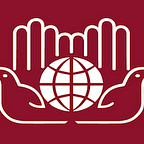Innovating Around the Problem of Insecure Environments
Humanitarians make a distinction between the types of humanitarian needs that arise out of simple natural disasters and “complex emergencies,” or an emergency that takes place in an insecure environment because of a breakdown of state structures or disputed legitimacy of the authorities. The majority of humanitarian needs in the world today reflect this latter type, where complex emergencies raise several challenges in providing for survivors.
A primary problem of complex emergencies is the ability to access survivors and deliver aid. Tending to those who are suffering in conflict zones can be thwarted to achieve states’ objectives, protect their interests, or to keep external parties out. Although insecure environments seem a difficult place in which to conceive of innovative efforts, new technologies have made it more possible to see ‘inside’ closed and violent territories and gain a better grasp of the situation at hand.
According to research conducted by Humanitarian Outcomes and the Global Public Policy Institute (GPPI), innovative technological mechanisms within insecure environments must be able to function without a continual flow of electricity, without higher-level computing skills, and across vast distances. Four technological trends fit these criteria: 1) handheld devices and electronic databases for digital data collection; 2) mobile phone-based feedback mechanisms; 3) broadcasting with forms of media as a radio, and 4) remote sensing with satellites.
While digital data entry collections use a smartphone or Internet connection to record survey responses more efficiently and enable a quick transmission of data, phone-based feedback mechanisms allow direct contact between aid workers and those receiving aid despite a lack of physical access. Concerning these feedback mechanisms, hand-held devices, and the software needed to implement these connections are relatively cheap. Remote sensing through satellites or UAVs, for its part, requires no access; allows for unique complementary data; and its effects are comparable over time and scale. Lastly, broadcasting contributes to raising awareness and accountability while allowing for local engagement with a broad reach.
Differing from the above four technology types, Save the Children made use of Simulated Field Visits (SFVs) to support and watch over field teams in Central and South Somalia (both of which are difficult to access). As shared by the Humanitarian Practice Network, SFVs were developed “to enable monitoring of nutrient programmes, including assessing programme performance against established standards, identifying bottlenecks and challenges and providing a connection with field teams to foster motivation and capacity development.” Save the Children’s initial analyses of SFVs have been quite positive, citing improvements in compliance with admission protocols and documentation of aided communities’ information.
Despite the potentials of humanitarian innovation in insecure environments listed, it is crucial to continue to apply humanitarian principles to the dissemination of technology. For instance, it is nearly impossible to apply technological innovations to all when emergencies often leave individuals without phones or means of communication. Similarly, it may be difficult for humanitarians to maintain their independence when partnering with private-sector tech companies or to maintain the privacy of those that they are seeking to protect. All of these raise possible ethical dilemmas that need examination as a piece of the innovative puzzle.
Written By Scarlett Aylsworth, Refuge Press Intern, Summer 2019
About the IIHA:
The Institute of International Humanitarian Affairs (IIHA) prepares current and future aid workers with the knowledge and skills needed to respond effectively in times of humanitarian crisis and disaster. Our courses are borne of an interdisciplinary curriculum that combines academic theory with the practical experience of seasoned humanitarian professionals. The IIHA also publishes on a wide range of humanitarian topics and regularly hosts a number of events in the New York area, including the annual Humanitarian Blockchain Summit and Design for Humanity Summit.
For media inquiries, please contact: Camille Giacovas, Communications & Research Officer, IIHA cgiacovas@fordham.edu
